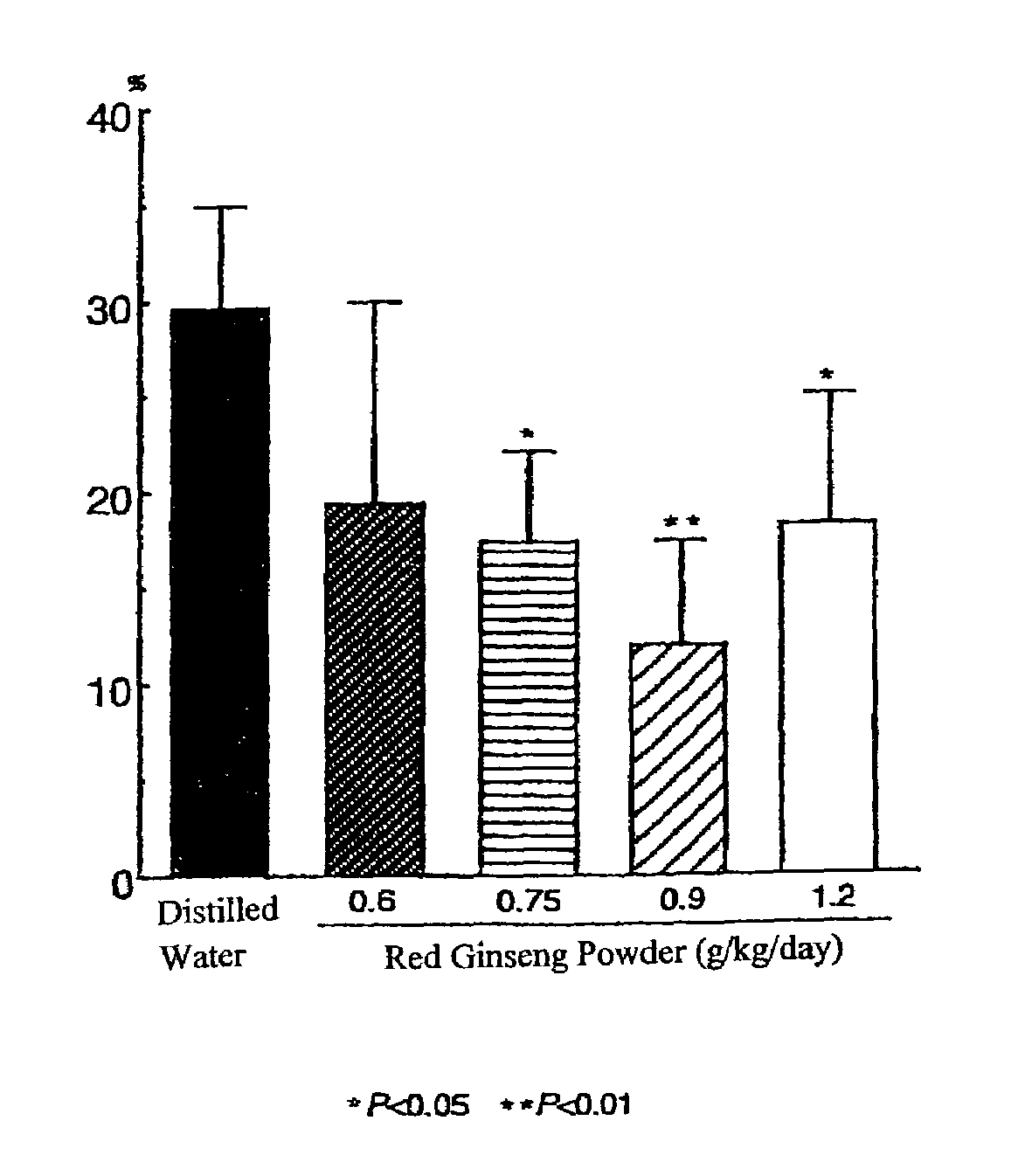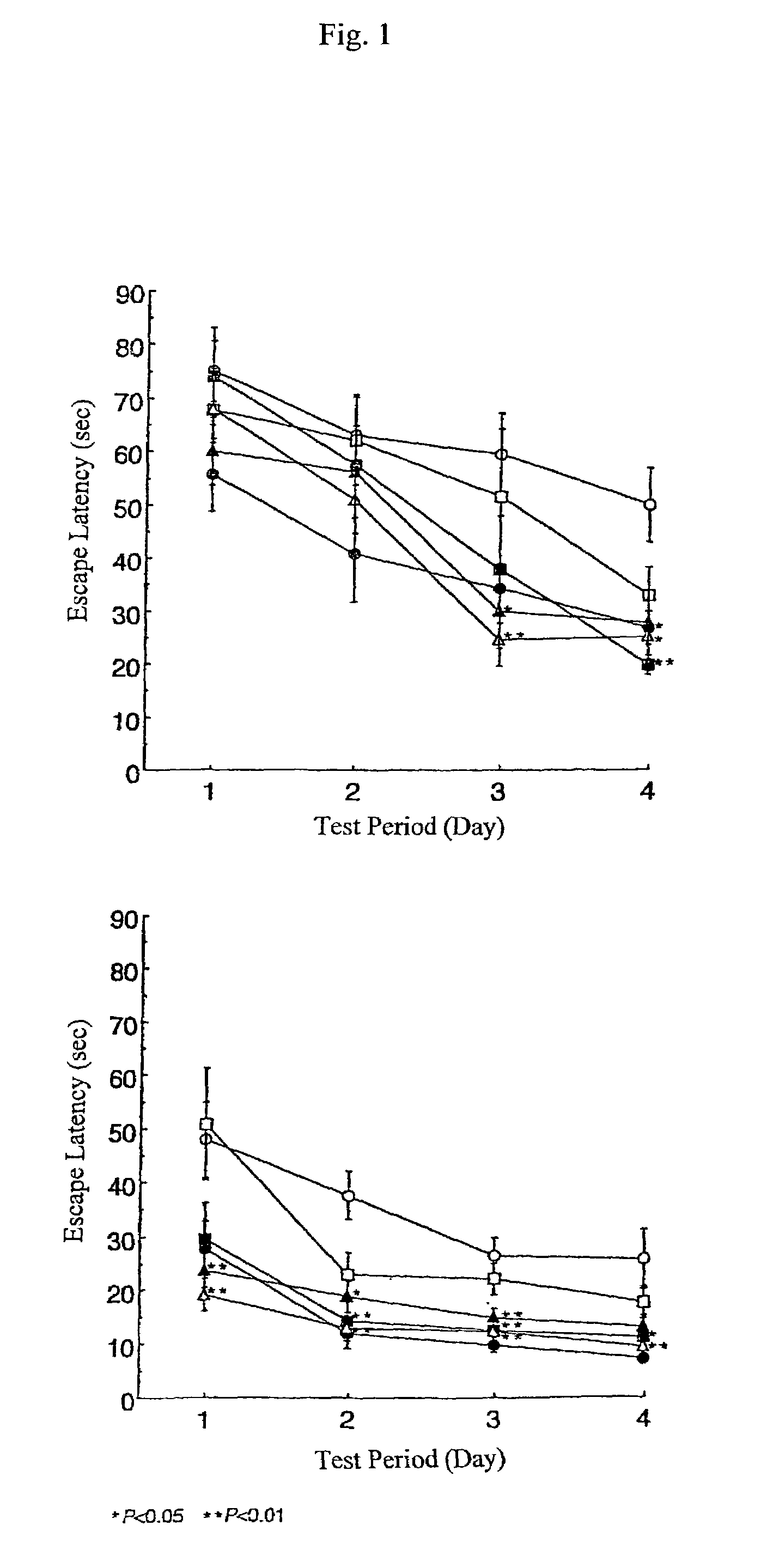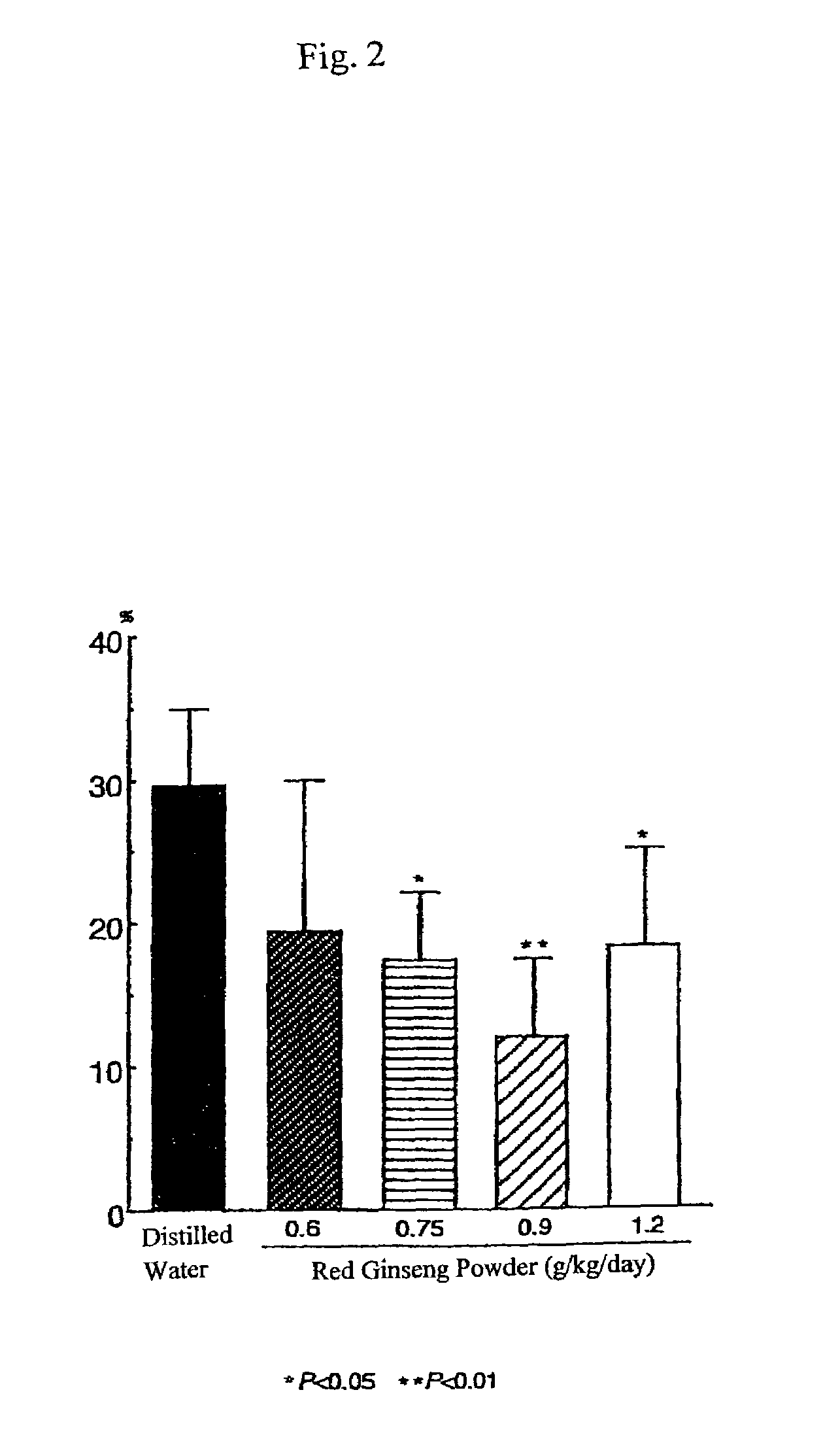Brain cell or nerve cell-protecting agents comprising medicinal ginseng
- Summary
- Abstract
- Description
- Claims
- Application Information
AI Technical Summary
Benefits of technology
Problems solved by technology
Method used
Image
Examples
example 1 (
Experiment on Oral Administration of Red Ginseng Powder Before and After Cerebral Infarction)
[0407]Male SH-SP rats at the age of 12-13 weeks, weighing 250-300 g, were used. Animals were bred in a room furnished with 12 hours light and dark cycles and water and feeds were supplied ad libitum. The cortical branch of the left middle cerebral artery (MCA) of each animal was coagulated and cut under inhalation anesthesia according to the method described by the present inventors (Sakanaka and Tanaka) (Igase, K., et al., J. Cereb. Blood Flow Metab., 19, 298-306, 1999; Sadamoto, Y., et al., Biochem. Biophys. Res. Commun., 253, 26-32, 1998). Red ginseng powder was mixed with distilled water and administered orally once a day for one week before MCA permanent occlusion and for 32 days after MCA permanent occlusion (0.6 g / kg / day, 0.75 g / kg / day, 0.9 g / kg / day or 1.2 g / kg / day, n=5-8)
[0408]Control animals with MCA permanent occlusion (ischemic control animals) and sham-operated animals were orall...
example 2 (
Experiments on Oral Administration of Red Ginseng Powder After Cerebral Infarction)
[0416]The cortical branch of the left middle cerebral artery (MCA) of each male SH-SP rat at the age of 12-13 weeks, weighing 250-300 g, was coagulated and cut under inhalation anesthesia, and red ginseng powder in a dose of 0.9 g / kg / day was administered orally once a day for 32 days (n=7). Control animals with permanent MCA occlusion (infarcted control animals; n=8), were administered with only distilled water.
[0417]After MCA permanent occlusion, according to the method of the inventors (Sakanaka and Tanaka) (Zhang B. et al., J. Stroke Cerebrovasc. Dis., 7, 1-9, 1998; Igase, K., et al., J. Cereb. Blood Flow Metab., 19, 298-306, 1999; Sadamoto, Y., et al., Biochem. Biophys. Res. Commun., 253, 26-32, 1998), water maze tests were performed for 4 days at the 2nd week and at the 4th week, respectively, and the place navigation abilities of SH-SP rats were determined.
[0418]Results are shown in FIG. 5. In F...
example 5 (
Long Term Degeneration-Suppressing Effect of Oral Administration of High Dose of Red Ginseng Powder on Hippocampal CA1 Neurons)
[0429]One of the present inventors reported that when the brain temperature of gerbils was maintained at 37° C.±0.2° C. and blood flow of the bilateral common carotid arteries was clamped for 3 min and reperfused, about one half of nerve cells in the hippocampal CA1 field degenerated after one week (Sakanaka, M., et al., Proc. Natl. Acad. Sci. USA, 95, 4635-4640, 1998). Further, the present inventors (Sakanaka and Tanaka) demonstrated that fragmentation of nerve cell nuclei, an index of apoptosis-like cell death, was further in progress in the remaining nerve cells at this moment as revealed by TUNEL staining (Wen, T.-C., et al., J. Exp. Med., 188, 635-649, 1998; Peng, H., et al., J. Cereb. Blood Flow Metab., 18, 349-360, 1998). Consequently, it was demonstrated that in the hippocampal CA1 field of gerbils with transient forebrain ischemia for 3 min differen...
PUM
 Login to View More
Login to View More Abstract
Description
Claims
Application Information
 Login to View More
Login to View More - R&D
- Intellectual Property
- Life Sciences
- Materials
- Tech Scout
- Unparalleled Data Quality
- Higher Quality Content
- 60% Fewer Hallucinations
Browse by: Latest US Patents, China's latest patents, Technical Efficacy Thesaurus, Application Domain, Technology Topic, Popular Technical Reports.
© 2025 PatSnap. All rights reserved.Legal|Privacy policy|Modern Slavery Act Transparency Statement|Sitemap|About US| Contact US: help@patsnap.com



